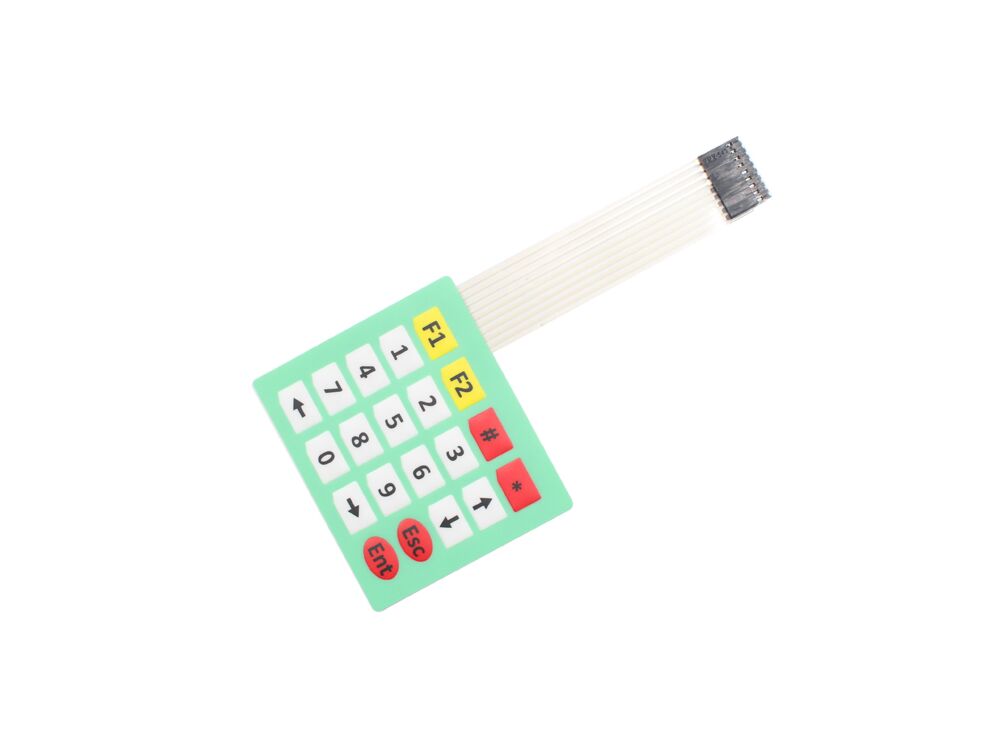Innovative Membrane Switch Solutions for Customized Control Panels
Innovative Membrane Switch Solutions for Customized Control Panels
Blog Article
Understanding Membrane Changes: The Key to Dependable and durable Controls

What Are Membrane Buttons?
Membrane layer switches are an advanced remedy in the world of interface modern technology, integrating functionality and layout perfectly. These tools offer as a user interface between individuals and electronic systems, incorporating numerous elements right into a small style. Commonly created from versatile, thin layers of materials, membrane buttons are created to react to touch, enabling customers to interact with equipment and electronic gadgets successfully.
The key components of a membrane button consist of a printed circuit layer, visuals overlay, and a spacer layer that protects against unintended activation. The visuals overlay can be personalized to mirror brand identity or individual choices, improving aesthetic appeals while guaranteeing use. Membrane switches are typically made use of in numerous applications, consisting of clinical gadgets, consumer electronic devices, and industrial tools, owing to their durability and resistance to ecological elements such as dampness and dirt.
Among the essential advantages of membrane switches is their capability to hold up against damage, making them excellent for high-traffic settings. Furthermore, they are lightweight and need minimal room, allowing for innovative layouts in product development. Overall, membrane changes represent a functional and reliable selection for contemporary digital user interfaces, weding modern technology with user-centric layout principles.
Exactly How Membrane Switches Work
The operation of membrane changes rest on a basic yet efficient system that equates user input into digital signals. These buttons contain multiple layers, typically including a visuals overlay, a spacer layer, and a circuit layer. When a customer presses the switch, the leading layer deforms, enabling a conductive aspect in the circuit layer to make contact with a matching conductive pad on the underside of the graphic overlay. This get in touch with closes the circuit and sends out an electronic signal to the tool, suggesting that the switch has been turned on.
The layout of membrane buttons can differ, yet they typically include domes or responsive aspects to offer feedback to the user, improving the overall experience - membrane switch. The materials made use of in membrane switches, such as polyester or polycarbonate, contribute to their toughness and resistance to environmental factors, including wetness and dirt. Moreover, the printed circuits are usually encapsulated, which safeguards them from wear and tear with time.
Benefits of Membrane Buttons

Additionally, membrane switches are understood for their sturdiness. Built from durable materials, they are resistant to dust, wetness, and physical wear, which substantially expands their life-span contrasted to traditional mechanical switches. This durability makes them particularly appropriate for high-traffic environments and applications calling for longevity.
One more considerable benefit is the simplicity of cleaning and maintenance. The smooth surface of membrane switches over lessens dust buildup and is often invulnerable to spills, making them excellent for setups that call for constant sanitization.
Furthermore, membrane layer switches provide a structured profile, leading to a thinner layout that can be incorporated right into various gadgets without adding mass. This function not just improves the visual appeal however likewise adds to an extra ergonomic item design.
Applications of Membrane Buttons
Functional and easy to use, membrane layer switches discover applications throughout a check this site out large range of markets, including clinical devices, consumer electronic devices, and commercial equipment. In the medical area, these buttons are integral to gadgets such as diagnostic equipment, patient monitoring systems, and mixture pumps, where reliability and ease of cleansing are essential. Their ability to hold up against extreme environments and maintain capability makes them perfect for such applications.

In consumer electronics, membrane layer switches are utilized in products like microwaves, washing equipments, and push-button controls - membrane switch. Their sleek design allows for user-friendly individual interfaces, enhancing the total individual experience while supplying toughness and resistance to tear and use
Industrial devices additionally profits from membrane buttons, specifically in control panels for equipment and automation systems. These switches supply protection against dust and wetness, making sure regular efficiency in challenging settings. Their customizable functions enable manufacturers to tailor them to certain functional demands, boosting effectiveness and functionality.
Choosing the Right Membrane Change
When picking a membrane layer button, it is necessary to take into consideration different variables that influence efficiency and viability for certain applications. The key considerations consist of environmental conditions, responsive comments, sturdiness, and style specifications.
First, analyze the operating setting; switches exposed to moisture, chemicals, or extreme temperature levels need details products to make certain longevity and performance. Next off, evaluate the need for tactile responses. Relying on individual interaction, some applications may gain from a responsive response to verify activation, while others might prefer a non-tactile layout for visual reasons.
Sturdiness is an additional important element; membrane layer buttons ought to be created to withstand constant usage, influences, and abrasion. Make certain the chosen button can endure the anticipated lifecycle, especially in high-usage situations.

Final Thought
In verdict, membrane switches offer as essential parts in the design of long lasting and reliable control systems across More Bonuses numerous markets. The adaptability of membrane layer changes allows for tailored services that fulfill particular functional demands, strengthening their relevance in contemporary innovation.
Membrane layer switches over represent a crucial facet of modern-day interface design, blending capability with strength in different applications.Membrane layer switches are an innovative option in the realm of customer interface technology, combining capability and design flawlessly. Commonly built from adaptable, slim layers of products, membrane layer buttons are developed to respond to touch, making it possible for users to interact with machinery and digital gadgets efficiently.
The style of membrane layer switches can differ, but they frequently include domes or tactile aspects to give responses to the user, enhancing the general experience.In conclusion, membrane changes offer as important elements in the design of reputable and long lasting control systems throughout various sectors.
Report this page